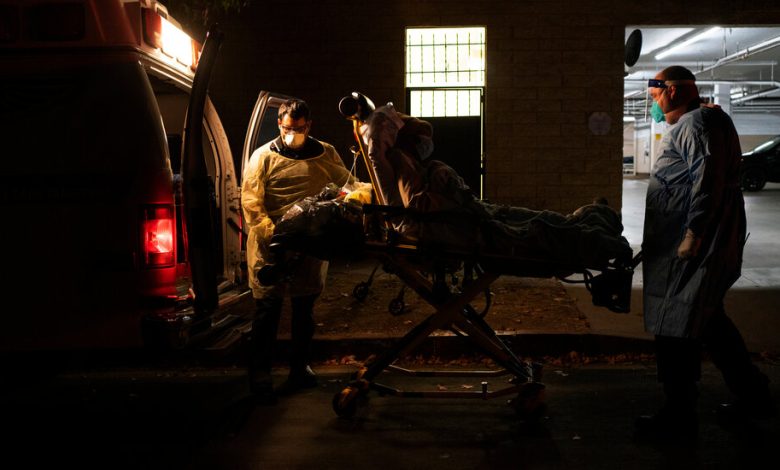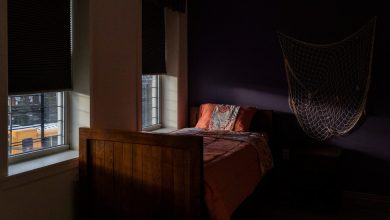How Nursing Homes Failed to Protect Residents From Covid

The first terrifying wave of Covid-19 caused 60,000 deaths among residents of nursing homes and other long-term care facilities within five months. As the pandemic wore on, medical guidelines called for promptly administering newly approved antiviral treatments to infected patients at high risk of severe illness, hospitalization or death.
Why, then, did fewer than one in five nursing home residents with Covid receive antiviral treatment from May 2021 through December 2022?
It’s hardly the only way that the nation’s nursing homes proved unable to keep patients safe. A series of studies assessing their attempts to protect vulnerable patients and workers from Covid, along with interviews with experts inside and outside the industry, presents a very mixed pandemic report card.
Brian McGarry, a health economist at the University of Rochester, and David Grabowski, a health care policy researcher at Harvard Medical School, both gave the health care system a D grade overall for nursing homes’ pandemic performance.
“I kept waiting for the cavalry to come, and it really hasn’t, even today,” Dr. Grabowski said. “At no time during the pandemic did we prioritize nursing homes.” More than 167,000 residents have died, Medicare reported this month, along with at least 3,100 staff members.
It was Dr. McGarry, Dr. Grabowski and their co-authors who discovered the failure to deliver antiviral medications. Early on, antivirals meant monoclonal antibodies, a difficult treatment. The drugs were in short supply and administered intravenously; patients might need to leave the facility to receive them.
But in December 2021, the Food and Drug Administration granted emergency authorization to Paxlovid, a pill taken for five days. It drastically improves the prognosis for eligible patients who are 65 and older, sick and frail.
Virtually every nursing home resident meets that description. This is “the highest of the high-risk groups,” Dr. McGarry said. Age and chronic illnesses make the residents vulnerable, “and they’re living in an environment that’s perfect for spreading airborne viruses,” he added, with shared rooms, communal spaces and staff moving from one patient to the next.
As the saying went, a nursing home was like a cruise ship that never docked.
But research recently published in JAMA found that only a quarter of infected residents received antivirals, even during the last six weeks of the study — by which time Paxlovid was widely available and free.
About 40 percent of the nation’s approximately 15,000 nursing homes reported no antiviral use at all.
“They’re basically depriving people of treatment,” said Dr. Karl Steinberg, a medical director at three nursing homes in Southern California and former president of AMDA, the medical association representing providers in long-term care. “It’s surprising and disturbing.”
One bright spot, several industry leaders agreed, was the federally coordinated rollout of the Covid vaccine, which sent providers to facilities in late 2020 and early 2021 to vaccinate residents and staff.
“A remarkable achievement, a collaboration between science and government,” said Dr. Noah Marco, chief medical director of Los Angeles Jewish Health, which cares for about 500 residents in three skilled nursing facilities.
By early 2022, Medicare reported, 87 percent of residents and 83 percent of employees had been vaccinated, though it took a federal mandate to reach that staff rate. Studies have shown that high staff vaccination rates prevent infections and deaths.
But “we totally dropped the ball on boosters,” Dr. McGarry said. “We just left it up to each nursing home.” Medicare reported this month that about 62 percent of residents per facility, and just 26 percent of staff, are up-to-date on Covid vaccinations, including recommended boosters.
“It’s disappointing,” Dr. Steinberg said. But with workers less likely to perceive Covid as a deadly threat, even though hospitalization and death rates recently began climbing again, “people say no, and we cannot force them,” he said.
Other grounds for poor grades: Early federal efforts prioritized hospitals, leaving nursing homes short of critical protective equipment. Even after the federal government began sending point-of-care testing kits to most nursing homes, so they wouldn’t have to send tests off to labs, getting results took too long.
“If we can find and detect people carrying Covid, we’ll keep them out of the building and prevent transmission,” Dr. McGarry explained. That largely meant staff members, since Medicare-mandated lockdowns shut out visitors.
Nursing homes apparently didn’t make much use of the testing kits. By fall 2020, fewer than a fifth had the recommended turnaround of less than 24 hours. “It negates the value of doing the test in the first place,” Dr. McGarry said.
As for those lockdowns, which barred most family members until November 2021, the consensus is that however reasonable the policy initially seemed, it continued for far too long.
“In retrospect, it caused a lot of harm,” Dr. Steinberg said. “We saw so much failure to thrive, people losing weight, delirium, rapid onset of dementia. And it was usually the staff who were bringing in Covid anyway. A big lesson is that family visitors are essential,” assuming those visitors are tested before they enter and that they use protective gear.
Dr. David Gifford, a geriatrician and the chief medical officer of the American Health Care Association, which represents long-term care providers, pointed to a variety of frustrating problems that prevented nursing homes from doing a better job during the pandemic.
Point-of-care kits that required 15 minutes to read each test and thus couldn’t screen workers arriving for a shift. Prescribing information emphasizing such a long list of possible drug interactions with Paxlovid that some doctors were afraid to use it. And the same suspicion and resistance toward boosters and antivirals that now affect the country as a whole.
“Nursing homes did as much as they could with what they had,” he said. “The health care system as a whole sort of ignored them.”
Staffing, already inadequate in many facilities before Covid, took a hit it has yet to recover from. “It’s our No. 1 issue,” Dr. Gifford said. His association has reported that nursing homes lost nearly 245,000 employees during the pandemic and have regained about 55,000.
“The people working in nursing homes certainly get an A for effort” for persevering at their dangerous jobs, Dr. Steinberg said. But so many have left that nursing homes now often restrict new admissions.
Some long-proposed changes could help protect residents and staff from future pandemics.
Facilities could improve their ventilation systems. They could abandon “semiprivate” rooms for private ones. Dividing buildings into smaller units with consistently assigned staff — an approach pioneered by the Green House Project — would both bolster relationships and reduce residents’ exposure to infection from workers coming and going.
All those changes would require more investment, however, principally from Medicaid, which underwrites most nursing home care. And with more money would come increased federal oversight, which the industry rarely welcomes.
“Investment in our industry, in order for us to provide the highest-quality care, is absolutely necessary,” Dr. Marco said. “But where is the government and public will to do that? I personally don’t see a lot of encouragement right now.”




